Reduce cost per hire remains the single most effective route to protecting stretched HR budgets while still attracting high-quality candidates. This guide shows how people leaders can trim spend, preserve experience and tap Workforce Africa’s regional expertise for sustained savings.

Why Reduce Cost Per Hire Matters In 2025
Global wage inflation and niche-skills competition continue to squeeze margins. When you reduce cost per hire by only five per cent across one hundred annual vacancies, the reclaimed funds can finance extra sales resource or a refreshed learning platform. Boards increasingly expect talent teams to reduce recruitment costs and present a clear financial return on every headcount request.
Start With A Precise Cost Per Hire Formula
Improvement starts with measurement. The accepted Society for Human Resource Management cost per hire formula divides the full total of internal recruiting expenditure and external supplier fees by the number of hires in the chosen period. Capture everything: recruiter salaries, advertising credits, assessment licences, candidate travel, agency commissions, background checks and onboarding administration. Once the data is consolidated, you possess a transparent baseline from which to reduce cost per hire methodically.
Map Every Sourcing Channel To A Cost Per Hire Benchmark
Data means little without context. Create a cost per hire benchmark for each role family and location, comparing against peer organisations where figures exist. Workforce Africa’s Talent Intelligence team publishes quarterly benchmarks across twenty African markets, so clients instantly spot realistic targets. When your referral programme in Lagos is already the lowest channel, focus instead on agency use in Nairobi or paid adverts in Accra. A robust, localised cost per hire benchmark lets you direct effort where it counts.
Optimise Your Recruitment Tech Stack
Legacy systems often duplicate effort and hide unnecessary licence fees. Audit the entire stack: Applicant Tracking System, video-interview platform, assessment suite, background-checking partner and onboarding portal; and ask whether each tool still shortens time to hire. Streamlined technology not only helps reduce cost per hire but also removes friction for candidates. Workforce Africa integrates skills assessments directly within our ATS so hiring managers receive one coherent profile, cutting manual processing by thirty per cent.
Shorten Decision Cycles Without Losing Rigour
Endless interview rounds inflate direct costs and cause strong candidates to disengage. To reduce cost per hire, restrict interviews to three purposeful stages that cover competence, values alignment and stakeholder approval. Panel sessions become more productive when every interviewer owns a unique scorecard, preventing duplication. During a recent Nairobi search, Workforce Africa trimmed average interview hours from twelve to six, helping a fintech lower talent acquisition costs and fill roles ten days faster.
Build Talent Communities Before You Need Them
Proactive engagement slashes sourcing expenses. Share thought-leadership content that speaks directly to niche skill sets, nurture subscribers through newsletters and invite passive prospects to webinars. When a vacancy arises, the pipeline is already warm, cutting advertising bills and agency commissions. Workforce Africa’s Talent Community service continuously curates finance, technology and customer-experience professionals, enabling clients to reduce cost per hire on every requisition we support. These communities also improve diversity and employer advocacy, valuable benefits that cost nothing extra.
Partner With Workforce Africa For Regional Reach
Running separate searches in each country multiplies expense. Consolidating hiring through a single regional specialist immediately lowers talent acquisition costs thanks to shared infrastructure and aggregated buying power. Workforce Africa’s Employer of Record model bundles compliant contracts, payroll and benefits into one monthly invoice, shielding clients from currency volatility and legal penalties. A consumer-goods brand recently aimed to reduce cost per hire across five West African markets; by transferring searches to Workforce Africa it achieved a twenty-two per cent saving in the first quarter.
Leverage Analytics To Predict Spend
Modern dashboards expose anomalies before they become budget leaks. Track the rolling three-month average cost at every funnel stage and flag variances above five per cent. Predictive algorithms built into Workforce Africa’s analytics suite forecast offer-acceptance probabilities, so HR can calibrate pipeline depth precisely. Accurate forecasting lets you reduce cost per hire by eliminating last-minute, premium-rate agency interventions.
Strengthen The Candidate Experience
Cost control is never an excuse for poor treatment. A courteous, timely process converts more qualified talent, reducing paid sourcing volume. Offer clear timelines, prompt feedback and mobile-friendly assessments. Employer-review platforms show that candidates who feel valued are thirty-eight per cent more likely to accept offers at standard salary bands, another practical way to reduce cost per hire without wage bidding wars. For further insight, explore Recruitment Process Outsourcing, which expands on streamlined candidate journeys.
Measure, Learn, Repeat
Continuous improvement closes the loop. Schedule monthly retrospectives where recruiters share which tactics most effectively reduce cost per hire. Celebrate gains, adjust under-performing steps, update your cost per hire formula inputs and lock in fresh targets. Over time you embed a culture of fiscal discipline that treats candidates as valued customers rather than cost centres.
Conclusion
You no longer need to choose between frugality and exceptional talent. With a clear cost per hire benchmark, disciplined data capture, lean processes and the regional expertise of Workforce Africa, any organisation can consistently reduce cost per hire while elevating the calibre of every hire. Sharpening your metrics today builds the financial headroom that fuels innovation tomorrow. Contact us today!






